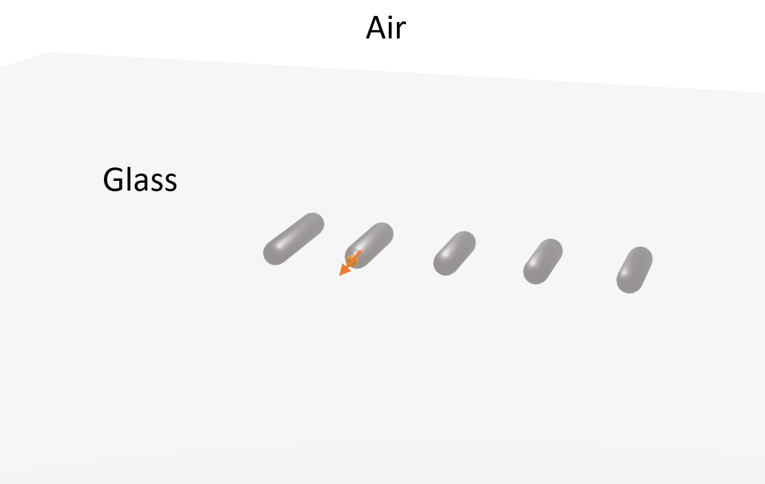# Plasmonic Yagi-Uda nanoantenna
Antennas are the fundamental building blocks for high-speed communication networks. The concept of an antenna is well-established, particularly in RF and microwave engineering, dating back over one century ago. An antenna transforms propagating electromagnetic waves to localized electromagnetic field and vice versa, depending on whether it is in the transmitting mode or receiving mode. Thus, it enables wireless communication and information transmission over long distances.
Recent rapid developments in nanotechnology have sparked vast interest in constructing the optical counterpart of antennas by utilizing the plasmonic nature of metal at optical frequencies. The size of these antennas is usually in the order of 100 nm. Therefore, they are often termed plasmonic nanoantennas. As the demand for higher bandwidth information transmission keeps growing, plasmonic nanoantennas potentially be the technological cornerstone for future communication systems.
In this example, we demonstrate the modeling of a plasmonic Yagi-Uda nanoantenna made of aluminum nanorods excited by a point dipole source. The far-field radiation pattern is calculated. We show that the simulated plasmonic Yagi-Uda nanoantenna can achieve a high directivity, which is desirable in many applications. The model is based on Tim H. Taminiau, Fernando D. Stefani, and Niek F. van Hulst, “Enhanced directional excitation and emission of single emitters by a nano-optical Yagi-Uda antenna,” Opt. Express 16, 10858-10866 (2008) (opens new window).
To view the full example in Python, please click here (opens new window).

